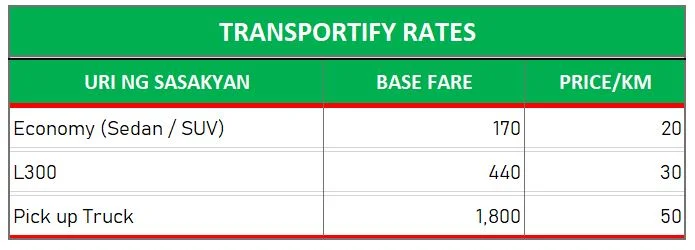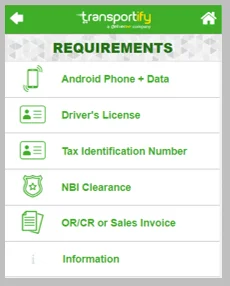Learning how the stock market works can be confusing, especially when it involves so many words, such as shares, stocks, and brokers, that are simply not a part of our vernacular. Because of that, we’ve compiled a list of FAQs that we hope can help fill in the blanks and provide more context to the matter one step at a time.
What is a stock market?
A stock market is something akin to a literal marketplace where the meat, fish, and fruits—the goods that are being bought, sold, and traded—are shares of publicly listed companies or stocks.
What are publicly listed companies?
You can think of them as your meat, fish, and fruit vendors who want to raise more capital so they can grow their business. To do that, they’ll need to divide their respective businesses into shares and offer them for sale to the public. Many big-name corporations in the Philippines have done this, including Ayala Land, SM Prime Holdings, and Jollibee Foods Corporation. You can find a list of all publicly listed companies in the Philippines here.
What are shares?
The parts of the company that corporations sell to the public in order to raise capital are known as shares. Say, your favorite fruit vendor decides that they want to grow their business and sell more exotic fruits. To raise capital for this expansion, they’ll have to slice up all their fruits and sell them to the public. Now there’s usually a minimum number of slices you can buy, but once you buy them, or rather, the shares of a company, you effectively become a shareholder or a part-owner. Of course, the extent of that ownership is directly proportional to the number of shares that you own, so if you only buy 100 slices of fruit in a fruit business with 10,000 slices, you own only 1%.
What are stocks?
Shares and stocks are often used interchangeably, but while they might seem like the same thing, they’re actually not. Generally speaking, a stock represents your overall ownership of a particular company, while a share represents a unit of your stock. When you say that you own stock in your favorite fruit vendor’s fruit stand, for example, it means you own several or more shares of that one fruit stand. When you say that you own several stocks, that means you own shares across different fruit stands. You probably also have shares across different meat and fish shops, too.
I’ve heard of common stocks and preferred stocks, but what’s the difference between them?
Common stocks grant you voting power over some important corporate decisions in the company such as who gets elected to be on the board of directors. This might not sound particularly relevant, especially if you’re just starting out, but when you’re invested in a company’s growth in, say, the next five years, you’ll realize pretty quickly that you’ll want to have some say as to the kind of people who are calling the shots. Again, using our favorite fruit vendor as an example, if you want the same person who’s running the business to continue running it, and not their brother who doesn’t know a thing about fruits, owning common stocks will give you some say over that decision. According to Investopedia, common stocks also tend to outperform preferred stocks in the long run.
On the other hand, preferred stocks won’t give you the ability to vote, but they do have the advantage of being prioritized in the event that the company goes bankrupt. Let’s say the fruit stand, having been transferred under the management of the clueless brother, closes. They’ll likely sell whatever they can, so they can distribute the money to their shareholders. If you own preferred stocks, you’ll feel the fruits of their labor (pun intended) first.
Why do people buy shares of a company or stocks across different companies?
As cool as it sounds to be a shareholder or stockholder of a company, people don’t just buy shares or stocks for that reason—they do it because it’s considered an investment. There are two ways you can earn from being a shareholder or stockholder: capital appreciation and dividends.
Capital appreciation is when the shares you bought become worth more than what they were when you first bought them. From there, you can either sell your shares and take the profit home or hold on to them in hopes that they continue to appreciate in value. Dividends, on the other hand, are shared earnings. Keep in mind that not all companies offer dividends. Some of them might opt to use the earnings to repurchase stocks or invest in other assets to help the business, which, in turn, can help make the stock itself more valuable.
What are the risks involved in this kind of investment?
Like all investments, buying shares of stock or stocks in general comes with a certain degree of risk. After all, there’s no guarantee that the value of your stock will go up. In some cases, it can even go down. For example, you may have bought shares of a fruit stand company because people were starting to get into healthy eating. Unfortunately, the fruit stand whose stock you own made poor decisions in the last two quarters and lost the business some money. Then there’s that scandal about the fruit stand using pesticides in their produce. The value of your stock may then go down.
There’s no guarantee that the company will be able to dole out dividends either. This is why it’s important to choose which companies you want to invest in carefully.
Expert investors usually employ a combination of fundamental, technical, and quantitative analyses to determine whether to buy or sell shares of stock or stocks. As a new investor, the rule of thumb is to invest in a company or companies that you think will be profitable in the years to come. Most financial institutions will also recommend that you invest with long-term success in mind. This means buying shares from a company or companies that you expect to grow in the next few years.
What’s the difference between fundamental, technical, and quantitative analyses?
Fundamental analysis requires you to value a company from all angles—from the assets it owns to the state of the industry it belongs to. Technical analysis puts more value on hard numbers like historical returns and stock prices. These tend to determine how well or badly the company might perform in the near future. Quantitative analysis is conducted by reviewing a company’s value through very specific calculations, such as its earnings-per-share ratio. You don’t need to be an expert on all three to start investing, but you can read up on each one, so that you’ll have a better idea of what qualities to look for in a company.
How does one invest in the stock market?
In the Philippines, all stocks are bought, sold, and traded at the Philippine Stock Exchange (PSE). To participate in the market, you need to have a broker, open a trading account, and in most cases, meet the minimum required investment. These days, signing up with an online broker is the easiest way to get started. Once your account is approved and funded, you can start buying and selling shares in the stock market. You can learn more about how to invest in the Philippine stock market here.
When should I invest in the stock market?
If you’re asking from a day-to-day standpoint, the PSE follows set trading hours every day. Typically, the market opens at 9:30 a.m. and closes at 3:30 p.m. with recess in between. However, lockdown due to the pandemic may have affected these hours. You can check the PSE website for more details.
On a more strategic level, however, you’ll want to buy shares when their value appears to be on an upward trajectory. This way, you can ride the wave of potential capital appreciation. Of course, that is easier said than done. With so many factors affecting stock price, it pays to be cautious.
You can also choose to invest a fixed amount of money in a good company regularly, so that even as the shares increase or decrease in value over time, you’ll still likely end up with a relatively low average cost per share in the long run. This is what’s known as peso-cost averaging.
As much information as there is about the stock market online, the best way to really understand it is to gain first-hand experience. Fortunately, experience doesn’t have to come at too high a cost. These days, you can start investing in the Philippine stock market for as little as P1,000. Whether 100% of that P1,000 goes to experience is your move.















